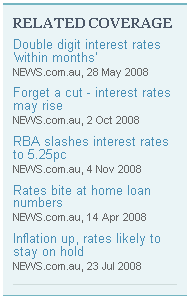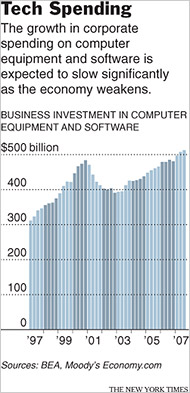 Today the Reserve Bank of Australia cut interest rates by 0.75% (0.25% more than the expected 0.5%. That represents a 200 basis point cut over just the last three months.
Today the Reserve Bank of Australia cut interest rates by 0.75% (0.25% more than the expected 0.5%. That represents a 200 basis point cut over just the last three months.
When reading an article on the cut on news.com.au, I noticed the “Related Coverage” sidebar. Every single piece of news has a different guess; some thought rates would go up, some down and some the same. In short, no-one really has any idea. How can these people be called experts? Is it really that the conflicting factors of inflation, house prices, consumer spending, the global stockmarkets and employment (to name just a few) are too hard to compare and weigh up? Maybe, but these ‘experts’ get paid for what they do! Or perhaps the experts are just journalists looking to create sensational headlines from titbits of superficial knowledge?
I am inclined to think that journalists play a very large role in the economic crisis, and that the severe fluctuations in the market are driven by fear generated by ‘experts’ and delivered to ‘mum and dad’ and ‘out of their depth’ investors.

 An article by
An article by 